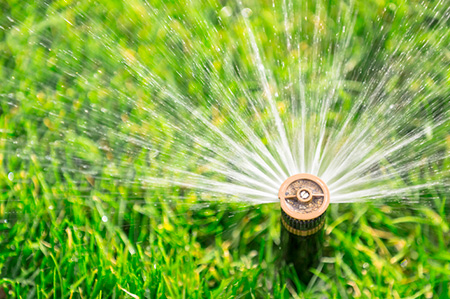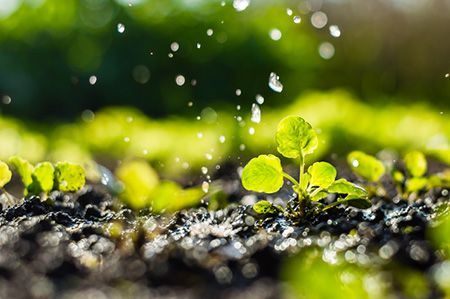Steps to Take for Reducing Water Consumption Rates and Costs
While the prime purpose for installing a lawn sprinkler/irrigation system is to ensure healthy lawns and trees and vibrant gardens, there is an obligation on the part of the homeowner to use their system in a sensible fashion. The indiscriminate or inappropriate use of a watering system can have several adverse effects, such as:
- Soil erosion
- Water wastage
- Excess surface run-off
- Diminished lawn/plant health
- Unreasonably expensive water bills
To minimize or eliminate these concerns, the lawn sprinkler and irrigation system specialists at A.A. Waters & Brookes offer the following sets of recommendations to help homeowners reduce their water consumption rates/costs, improve watering effectiveness, and maintain the health and curb appeal they want for their property.


Inspect and Monitor Your Existing System
- Have the system’s overall efficiency inspected by a certified professional
- Review water bill history for an unusual spike in usage – could mean a leak
- Check the system/equipment throughout the season for breaks, leaks, damage
- Invest in an annual service contract and mid-season checks
Choose Watering Times Carefully
- Best between 5:00 a.m. and 10:00 a.m. – low sun and cooler temperatures
- Monitor the weather – avoid watering just before, during, or after rainstorms
- Avoid mid-day use when winds tend to be higher (prevents water from drifting)
- Abide by municipal guidelines for watering lawns/gardens (to avert possible fines)
Use the Appropriate Amount of Water
- Adjust the length of watering time to compensate for weather/seasonal changes
- Remove older spray nozzles and replace them with newer high-efficiency models
- Consider the amounts of sun and shade for different areas and adjust accordingly
- Water in short segments versus a continuous session – soaks in better; less run-off
- Walk the property and inspect the lawns/gardens – which need water? which do not?
- Use new weather-based controllers
Use the Correct Equipment and Settings
- Install pressure-regulated sprinklers to avoid misting and therefore not waste water
- Use sprinklers with pre-installed check valves to prevent pooling and drainage issues
- Consider low-volume drip irrigation for trees, containers, and sparsely-planted areas
- Do not mix-and-match different types of sprinklers; cannot assure uniform coverage
Make Sure the Water Reaches Its Targets
- Adjust and routinely check sprinklers to ensure that they are watering the right areas
- Install spray heads that minimize water loss due to misting and airborne evaporation
- Keep spray path unimpeded – adjust sprinkler height to compensate for plant growth
Maintain Your Landscaping
- Remove weeds and clear out debris to allow the water to reach its intended targets
- Apply and refresh mulch to help with drainage, root development, moisture retention
- Keep plants below the height of the spray from sprinklers or request the sprinklers be raised or altered
For additional insight on any of the above recommendations and/or to discuss upgrades to your current system and equipment to help in reducing your water consumption rates, call the lawn sprinkler and irrigation system professionals from A.A. Waters & Brookes today at 416-665-0052 to arrange a time for an informative and complimentary consultation.
